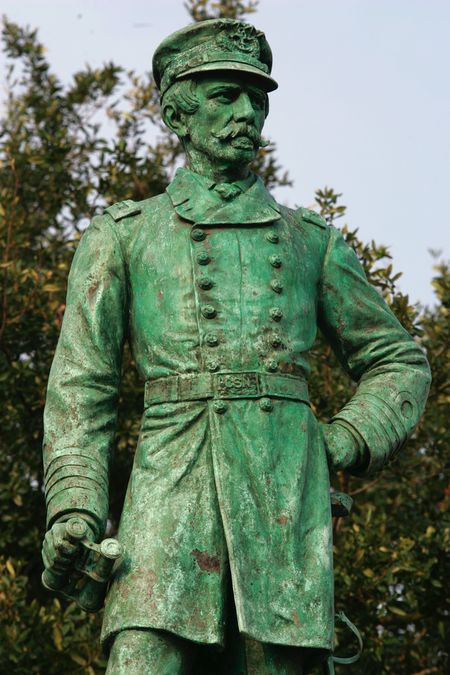
In the dead of night of June 5, 2020, the city of Mobile removed the statue of Confederate Admiral Raphael Semmes from the intersection of Royal and Government street in the heart of downtown. The monument had stood for around one hundred years, unavoidable at one of the most prominent points of entrance into the city. Mayor Stimpson announced it would be moved into the Mobile History Museum next to where the statue stood. Now is the trickiest phase for the city as they have to balance the careful considerations of how to communicate the city’s history.
Mobile was right to remove the Semmes statue from its place in the landscape of public symbols, where it was part of a concerted effort to communicate a Lost Cause vision of the Civil War in the city’s public spaces. The current history museum was the city hall when the Semmes statue was erected. Confederate statues cannot be contextualized where they are, as their entire placement was to deliberately influence the way the public thought of their shared history. Semmes is inarguably a part of Mobile’s history, the chief player in her important chapter in the Civil War, and the namesake for a large suburb of the city.
However, this statue is not Semmes and its place in history does not belong in the Civil War section of the museum, instead it belongs in the area dedicated to Reconstruction and Jim Crow. Its place is not back on another pedestal as some magnificent centerpiece in the section devoted to the Battle of Mobile Bay. This statue was made long after the end of the Confederacy and the death of Semmes, it should be contextualized as a part of the Lost Cause revisionism championed by white supremacists in the city. It should be on the ground next to a similar symbol of the period, a Klan robe. Both are reminders of how white supremacists, secure in their belief of the justness of the Lost Cause, ruled Alabama and systemically oppressed black Mobilians.

You’ve made a really important distinction here: Lost Cause monuments have little to do with the Civil War and much more to do with Jim Crow. The question for interpretation becomes, then, how do we bridge the gap between what people know about Jim Crow (i.e. segregation, etc) and the everyday experience of these monuments?